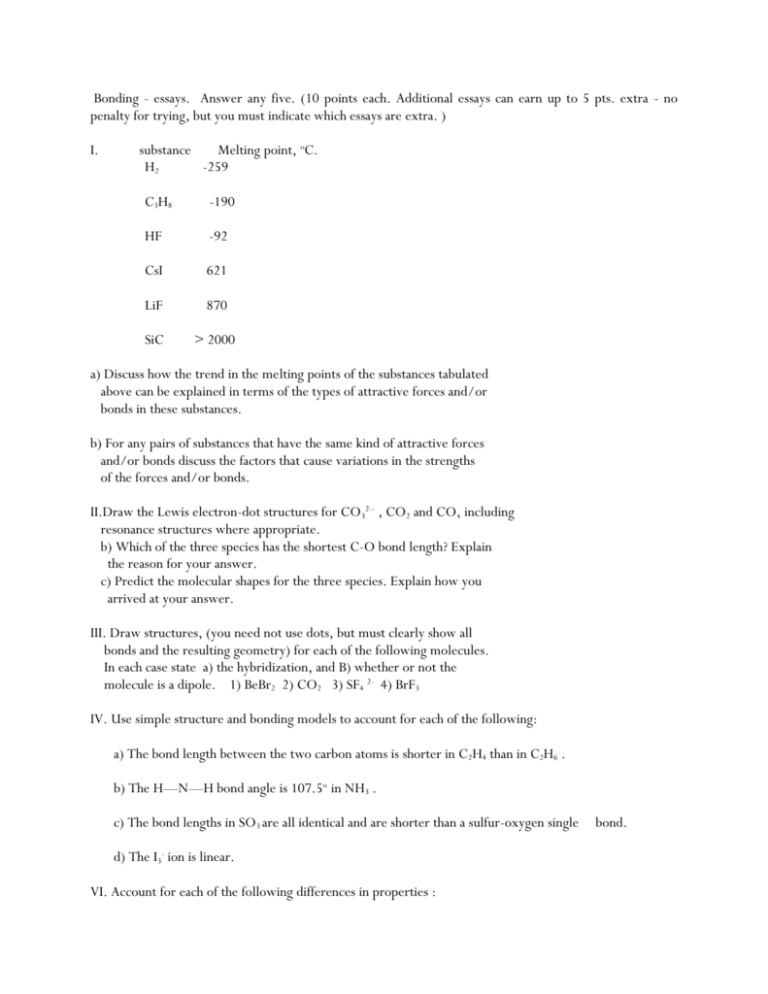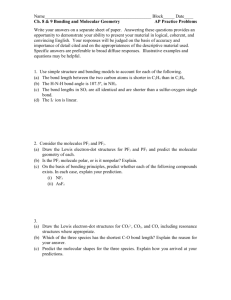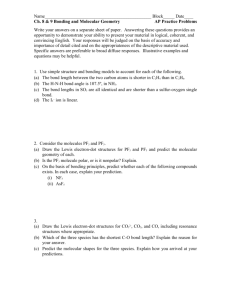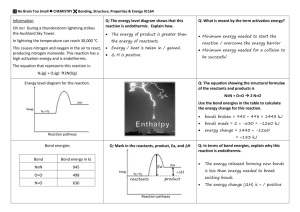File
advertisement

Bonding - essays. Answer any five. (10 points each. Additional essays can earn up to 5 pts. extra - no penalty for trying, but you must indicate which essays are extra. ) I. substance Melting point, oC. H2 -259 C3H8 -190 HF -92 CsI 621 LiF 870 SiC > 2000 a) Discuss how the trend in the melting points of the substances tabulated above can be explained in terms of the types of attractive forces and/or bonds in these substances. b) For any pairs of substances that have the same kind of attractive forces and/or bonds discuss the factors that cause variations in the strengths of the forces and/or bonds. II.Draw the Lewis electron-dot structures for CO32-- , CO2 and CO, including resonance structures where appropriate. b) Which of the three species has the shortest C-O bond length? Explain the reason for your answer. c) Predict the molecular shapes for the three species. Explain how you arrived at your answer. III. Draw structures, (you need not use dots, but must clearly show all bonds and the resulting geometry) for each of the following molecules. In each case state a) the hybridization, and B) whether or not the molecule is a dipole. 1) BeBr2 2) CO2 3) SF4 2- 4) BrF3 IV. Use simple structure and bonding models to account for each of the following: a) The bond length between the two carbon atoms is shorter in C2H4 than in C2H6 . b) The H—N—H bond angle is 107.5o in NH3 . c) The bond lengths in SO3 are all identical and are shorter than a sulfur-oxygen single d) The I3- ion is linear. VI. Account for each of the following differences in properties : bond. a) Molten MgCl2 is more than 200 times a better electrical conductor than molten BeCl2 . b) The melting point of MgF2 is 500 degrees higher than that of MgCl2 . c) The bond length in N2 is much shorter than that of F2 . d) The bond length of Br2 is much larger than that of F2 . VII. Explain each of the following observations in terms of the electronic structure and/or bonding of the compounds involved. a) Under ordinary conditions HF is a liquid whereas HCl is a gas. b) Molecules of AsF3 are polar, whereas molecules of AsF5 are nonpolar. c) The N—O bonds in the NO2-- ion are equal in length, whereas they are unequal in HNO2 . d) For sulfur, the fluorides SF2 , SF4, and SF6 are known to exist, whereas for oxygen only OF2 is known to exist.











